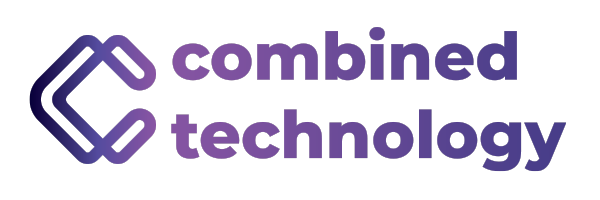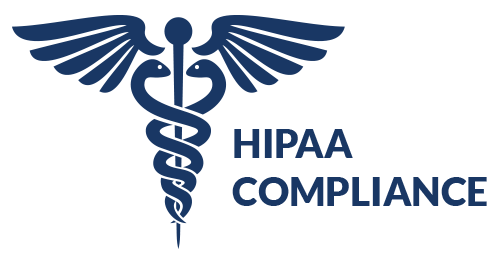Managing IT costs effectively while ensuring strong security can be a challenging balancing act for businesses. Many organizations struggle with reducing expenses without leaving vulnerabilities in their systems. One of the most effective strategies is outsourcing IT management to a trusted Managed IT Service Provider (MSP). At Combined Technology, we believe that cost optimization and security can go hand in hand. Here’s how you can achieve both:
1. Assess Your Current IT Infrastructure
Conducting a comprehensive audit of your existing IT setup can reveal hidden inefficiencies:
- Identify Redundancies: Look for overlapping services or software that aren’t essential and eliminate them to cut costs.
- Review Usage: Ensure you’re only paying for what you use. Sometimes, businesses pay for more licenses or storage than needed.
- Evaluate Vendors: Regularly assess vendor contracts and negotiate better rates for necessary services.
- Security Gaps: Identify any weak points in your system that could pose security risks and prioritize their resolution to prevent costly breaches.
2. Leverage Cloud Computing
Migrating to cloud services can significantly reduce hardware and maintenance costs:
- Scalability: Cloud providers offer flexible pricing, allowing companies to pay only for the resources they use.
- Reduced Capital Expenditure: Cloud computing transforms large IT investments into manageable operational costs, providing flexibility and scalability while keeping costs under control.
- Disaster Recovery Benefits: Cloud services often come with built-in disaster recovery solutions, which help prevent data loss and costly downtime.
3. Optimize Software Licensing
- Identify Unused Licenses: Remove or reassign licenses that are not in use to avoid unnecessary costs.
- Explore Open-Source Alternatives: Open-source software can serve as a cost-effective alternative to expensive proprietary systems, maintaining functionality without the financial burden.
- Centralized License Management: Use software asset management tools to keep track of all your licenses and ensure compliance while avoiding unnecessary renewals.
4. Outsource Non-Core IT Functions to a Managed IT Service Provider
- Cost Savings: Outsourcing tasks such as help desk support, network monitoring, and software maintenance to an MSP can significantly reduce IT overhead costs while ensuring high-quality service.
- Access to Expertise: Partnering with a Managed IT Service Provider ensures that experienced professionals manage your IT functions, often at a lower cost than maintaining an in-house team.
- Enhanced Security: MSPs provide proactive monitoring, threat prevention, and compliance management, helping businesses stay protected against cyber threats while keeping costs in check.
- Compliance Assistance: Many industries have strict regulatory requirements, and MSPs can help businesses stay compliant with data protection laws without investing in costly in-house compliance programs.
For businesses unsure whether it’s time to switch to a managed IT provider, understanding the signs can help make a more informed decision. Learn more in our blog: Signs It’s Time to Switch to a Managed IT Provider.
Uncertain about which IT service model fits your business best?
Our team is here to help you navigate the options and answer all your questions so you can make the best decision for your business. Get in touch for a free assessment today!
5. Implement Energy-Efficient Practices
- Upgrade to Energy-Efficient Hardware: Investing in energy-efficient hardware is a long-term IT cost reduction strategy.
- Optimize Data Centers: Implementing energy-efficient practices in data centers can lower utility bills and contribute to overall IT cost savings.
- Cloud-Based Workflows: Transitioning to cloud storage and cloud applications can reduce the need for on-premises servers, lowering energy consumption.
6. Adopt Automation Technologies
- Automate Routine Processes: Automation tools for patch management, system updates, and threat prevention can reduce labor-intensive tasks, freeing IT staff to focus on strategic initiatives.
- Enhance Efficiency: Automation in IT operations can lead to significant cost savings.
- AI-Driven Security Measures: Implement AI-driven cybersecurity solutions to proactively identify and mitigate threats, reducing the need for costly human intervention.
7. Conduct Regular Security Training
- Reduce Human Errors: Educate staff on best practices for data security to reduce human errors that could lead to breaches.
- Lower Breach Costs: Employee mistakes account for nearly 23% of breaches, with an average cost of $4.6 million per incident.
- Phishing and Social Engineering Awareness: Training employees to recognize phishing attacks and social engineering tactics can help prevent cybercriminals from gaining access to sensitive data.
- Regular Testing: Conduct simulated security breach drills to ensure employees remain vigilant and responsive to potential cyber threats.
8. Implement Virtualization Techniques
- Server Consolidation: By consolidating multiple servers onto a single physical machine, businesses can reduce hardware needs, lower energy consumption, and simplify IT management.
- Reduce Physical Infrastructure Costs: With server virtualization, businesses can decrease physical infrastructure costs and energy usage.
- Virtual Desktop Infrastructure (VDI): Using virtual desktops allows employees to securely access business applications from any device, reducing the need for expensive company-issued hardware.
9. Prioritize Cybersecurity Investments
- Firewall and Antivirus: Ensure you have basic protections like firewalls and antivirus software in place.
- Data Encryption: Encrypt sensitive data to protect it from unauthorized access.
- Access Control: Implement strict access controls to limit who can view or modify sensitive information.
- Proactive Threat Prevention: Invest in solutions that focus on preventing cyber threats before they can cause harm, rather than just detecting them after an attack.
- Zero-Trust Security Model: Implement a zero-trust approach where access to networks and systems is strictly controlled, verifying every user and device attempting to connect.
- Incident Response Planning: Develop a clear, documented incident response plan to minimize the impact of security breaches and ensure quick recovery.
10. Review and Renegotiate Vendor Contracts
- Identify Better Rates: Regularly assess vendor contracts and negotiate better rates for services you still require.
- Eliminate Inefficiencies: Optimize vendor management to identify competitive pricing and eliminate inefficiencies in supplier relationships.
- Leverage Bulk Purchasing: If your business requires multiple software subscriptions or hardware, negotiating bulk discounts can lead to significant savings.
- Flexible Contract Terms: Seek vendors who offer flexible, pay-as-you-go pricing models rather than long-term commitments that may become cost-prohibitive over time.
By implementing these strategies, businesses can significantly reduce IT expenses while maintaining a secure and resilient digital environment. At Combined Technology in Tulsa, Oklahoma, we specialize in helping companies find the right balance between cost optimization and cybersecurity. Contact us today to learn more about how we can support your IT needs!
Get in Touch with Us

Safeguard Your Business with Tulsa's Top Managed IT Provider
At Combined Technology, we provide a flexible, tailored approach to meet your evolving IT needs. Safeguard your business against emerging threats with our expert-managed IT services and customized cybersecurity solutions.





